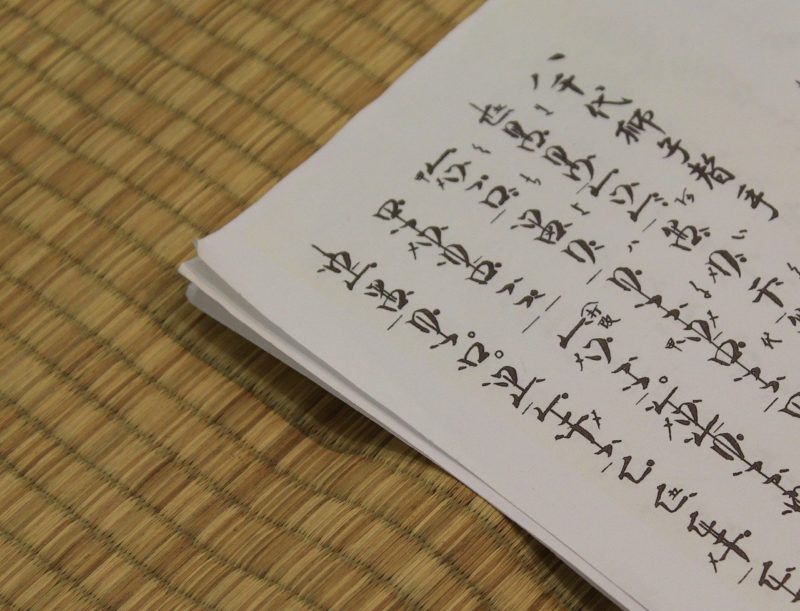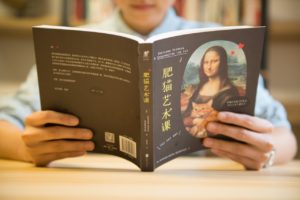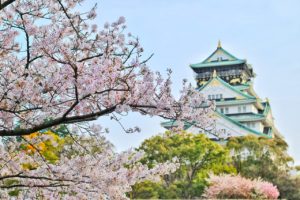There Are Three Japanese Alphabets
The Japanese alphabet is made up of three different scripts. I know what you’re thinking: not only do you have to learn an alphabet that’s 100% different from English, you have to learn three of them? But, don’t worry. You can definitely master the letters of all Japanese alphabets quickly. Let’s break down how the Japanese writing system works.
Why You Need to Learn the Japanese Alphabet
It may be obvious, but you need the Japanese alphabet to read and write in Japanese. The only way you’ll achieve fluency is if you learn the Japanese alphabet first. Familiarity with these letters early on will go a long way. This is the authentic and most effective method to reach Japanese proficiency.
Why Not Romaji?
Romaji is Romanized Japanese. It’s Japanese words written with the Latin letters of the English alphabet. A lot of lazy Japanese students only learn Romaji, because it’s easy. But, when you’re learning Japanese, easy isn’t always good.
Those who learn with only Romaji won’t have correct Japanese pronunciation. They’ll never read Japanese manga. And when they go to Japan, they’ll be completely lost. So, do your Japanese knowledge a favor, and master the three Japanese alphabets as the first step of your learning journey.
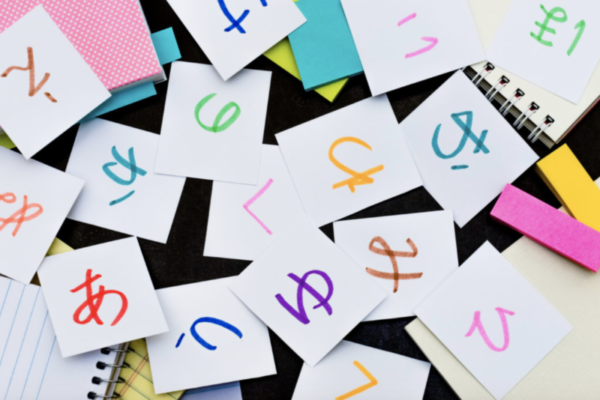
Overview of the Japanese Alphabet
As we mentioned before, the Japanese alphabet is comprised of three different scripts:
- Kanji
- Hiragana
- Katakana
These letters have a slightly different look. Some Japanese words are written with one script, others are a mixture of all.
Kanji are the Chinese characters that have been adopted into modern Japanese writing. Certain Japanese words like verbs, adjectives, and nouns are written with kanji. With kanji characters, you can better discern when each new word begins. Essentially, these kanji symbols act in place of the meanings they represent.
Katakana and hiragana are the two phonetic alphabets of Japanese. Here, one character is a syllable, based on the pronunciation. These alphabets contain around 50 characters each. Though this may seem overwhelming, the English language technically contains 104 various letter appearances between cursive, print, lowercase, and capital letters. If you can handle English, you should have no problem with the Japanese alphabet.
Katakana and hiragana characters are made with phonetic sounds, which is quite similar to English. Once you know the meaning of each character, you’ll be able to read katakana and hiragana easily. Though katakana and hiragana use similar sounds, they both have different characters.
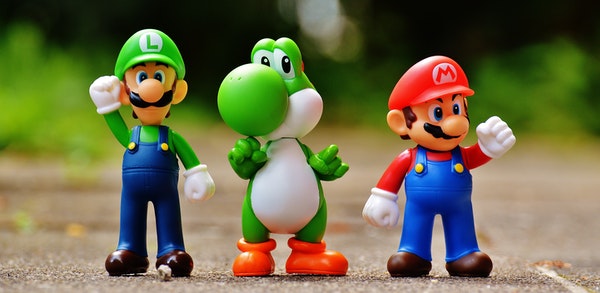
Hiragana
k |
s |
t |
n |
h |
m |
y |
r |
w |
|||
a |
あ (a) |
か (ka) |
さ (sa) |
た (ta) |
な (na) |
は (ha) |
ま (ma) |
や (ya) |
ら (ra) |
わ (wa) |
ん (n) |
i |
い (i) |
き (ki) |
し (shi) |
ち (chi) |
に (ni) |
ひ (hi) |
み (mi) |
り (ri) |
|||
u |
う (u) |
く (ku) |
す (su) |
つ (tsu) |
ぬ (nu) |
ふ (fu) |
む (mu) |
ゆ (yu) |
る (ru) |
||
e |
え (e) |
け (ke) |
せ (se) |
て (te) |
ね (ne) |
へ (he) |
め (me) |
れ (re) |
|||
o |
お (o) |
こ (ko) |
そ (so) |
と (to) |
の (no) |
ほ (ho) |
も (mo) |
よ (yo) |
ろ (ro) |
を (wo) |
Hiragana is a character-based writing system, and probably the closest thing you’ll find to a “traditional alphabet”. Although there have been a few attempts to develop a Latinized script (rōmaji), there is no widely used, standardized system, as there is with Pinyin for Chinese. The modern hiragana character system consists of 46 base characters, including the following:
- 5 vowels (comprised of one character)
- 40 consonant-vowel unions (comprised of more than one characters)
- 1 consonant (comprised of one vowel)
You could technically write everything Japanese in hiragana. But, it has no spaces. So, once you’re done, it’s basically impossible to read. That’s why a mixture of hiragana, katakana, and kanji is preferred.
Katakana
k |
s |
t |
n |
h |
m |
y |
r |
w |
|||
a |
ア (a) |
カ (ka) |
サ (sa) |
タ (ta) |
ナ (na) |
ハ (ha) |
マ (ma) |
ヤ (ya) |
ラ (ra) |
ワ (wa) |
ン (n) |
i |
イ (i) |
キ (ki) |
シ (shi) |
チ (chi) |
ニ (ni) |
ヒ (hi) |
ミ (mi) |
リ (ri) |
|||
u |
ウ (u) |
ク (ku) |
ス (su) |
ツ (tsu) |
ヌ (nu) |
フ (fu) |
ム (mu) |
ユ (yu) |
ル (ru) |
||
e |
エ (e) |
ケ (ke) |
セ (se) |
テ (te) |
ネ (ne) |
ヘ (he) |
メ (me) |
レ (re) |
|||
o |
オ (o) |
コ (ko) |
ソ (so) |
ト (to) |
ノ (no) |
ホ (ho) |
モ (mo) |
ヨ (yo) |
ロ (ro) |
ヲ (wo) |
You may notice how similar katakana is to hiragana. And you’re right, they’re really alike because they both represent phonetic Japanese. So, what’s the difference between katakana and hiragana?
You use hiragana for Japanese words only. And you use katakana for foreign words. There are a lot of loanwords from Chinese and English in Japanese. So, when you encounter these, you’ll most likely use katakana.
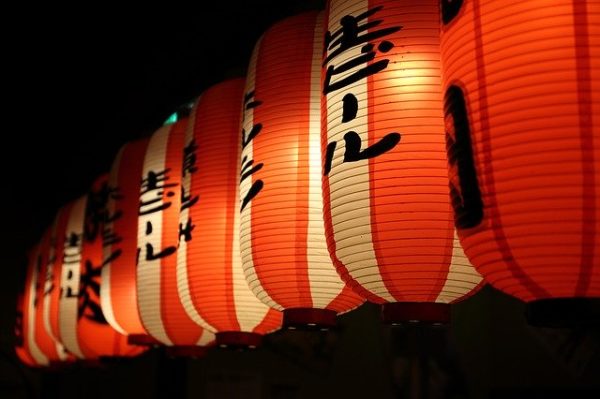
Kanji
Kanji characters are borrowed from Chinese. They don’t just represent a syllable. One symbol equals one meaning. So, there’s a lot more of them than hiragana or katakana.
There are over 2,000 kanji characters in everyday speech. (Ok, there are 2,136, if you want to get technical about it.) But, for now, let’s get into all 2,000+ characters here.
The chart below gives you the 100 most common kanji characters that are taught in the first grade. This is probably a good starting point for anyone who wants to learn Japanese. We’ll include a more in-depth history of what onyomi and kunyomi is. But, for now, the most important difference is that onyomi is from Chinese words, and kunyomi is from the original Japanese.
List of 100 Common Kanji Symbols Chart
Kanji |
English Meaning |
Onyomi |
Kunyomi |
一 |
One |
ichi, itsu |
hito(tsu), hito |
二 |
Two |
ni |
futa(tsu), futa |
三 |
Three |
san |
mit(tsu), mi |
四 |
Four |
shi |
yo(tsu), yo, yon |
五 |
Five |
go |
itsu(tsu), itsu |
六 |
Six |
roku |
mut(tsu), mu |
七 |
Seven |
shichi |
nana(tsu), nana |
八 |
Eight |
hachi |
yat(tsu), ya |
九 |
Nine |
kyuu, ku |
kokono(tsu), kokono |
十 |
Ten |
juu, ji |
tou, to |
百 |
Hundred |
hyaku |
— |
千 |
Thousand |
sen |
chi |
万 |
Ten thousand |
man, ban |
— |
円 |
Yen, circle, and round |
en |
maru(i) |
日 |
Day, sun |
nichi, jitsu |
hi, ka |
週 |
Week |
shuu |
— |
月 |
Month, moon |
getsu, gatsu |
tsuki |
年 |
Year |
nen |
toshi |
時 |
Time, hour |
ji |
toki |
間 |
Time frame, span of time |
kan, ken |
aida |
分 |
Minute, part, to understand, to divide |
bun, bu, fun |
wa(karu) |
午 |
Noon |
go |
— |
前 |
Before |
zen |
mae |
後 |
After, later, behind |
go, kou |
ato |
今 |
Now |
kon, kin |
ima |
先 |
Before, ahead, future |
sen |
saki |
来 |
To come |
rai |
ku(ru) |
半 |
Half, middle |
han |
naka(ba) |
毎 |
Every, each |
mai |
— |
何 |
What, which, how many |
ka |
nan, nani |
人 |
Person |
jin, nin |
hito |
男 |
Man, boy, male |
dan, nan |
otoko |
女 |
Woman, girl, female |
jo, nyo |
onna, me |
子 |
Child |
shi, su |
ko |
母 |
Mother |
bo |
haha |
父 |
Father |
fu |
chichi |
友 |
Friend |
yuu |
tomo |
火 |
Fire |
ka |
hi |
水 |
Water |
sui |
mizu |
木 |
Tree, wood |
moku, boku |
ki, ko |
土 |
Earth, ground |
do, to |
tsuchi |
金 |
Money, gold |
kin, kon |
kane |
本 |
Book, source |
hon |
moto |
川 |
River |
sen |
kawa |
花 |
Flower |
ka |
hana |
気 |
Spirit |
ki, ke |
— |
生 |
Life, to live, to be born, to grow |
sei, shou |
i(kiru), u(mareru), ha(yasu) |
魚 |
Fish |
gyo |
sakana |
天 |
Heaven |
ten |
ame, ama |
空 |
Sky, empty |
kuu |
sora, a(keru) |
山 |
Mountain |
san |
yama |
雨 |
Rain |
u |
ame |
電 |
Electricity |
den |
— |
車 |
Car, vehicle |
sha |
kuruma |
語 |
Language, word, to chat |
go |
kata(ru) |
耳 |
Ear |
ji |
mimi |
手 |
Hand |
shu |
te |
足 |
Foot, to add |
soku |
ashi, ta(su) |
目 |
Eye |
moku |
me |
口 |
Mouth |
kou, ku |
kuchi |
名 |
Name |
mei, myou |
na |
店 |
Shop |
ten |
mise |
駅 |
Station |
eki |
— |
道 |
Street, path, way |
dou |
michi |
社 |
Shrine, society |
sha |
yashiro |
国 |
Country |
koku |
kuni |
外 |
Outside |
gai, ge |
soto, hazu(reru), hoka |
学 |
School, learning |
gaku |
mana(bu) |
校 |
School |
kou |
— |
上 |
Up, above |
shou, jou |
ue, u, a(geru) |
下 |
Down, below |
ka, ge |
ku(daru), shita |
中 |
Middle, center, inner, between |
chuu |
naka |
北 |
North |
hoku |
kita |
西 |
West |
sai, sei |
nishi |
東 |
East |
tou |
higashi |
南 |
South |
nan |
minami |
右 |
Right |
yuu |
migi |
左 |
Left |
sa |
hidari |
見 |
To see, to be visible, to show |
ken |
mi(ru) |
聞 |
To hear, to listen, to ask |
mon, bun |
ki(ku) |
書 |
To write |
sho |
ka(ku) |
読 |
To read |
doku |
yo(mu) |
話 |
To talk, conversation |
wa |
hanashi, hana(su) |
買 |
To buy |
bai |
ka(u) |
行 |
To go, to carry out |
kou |
i(ku), okona(u) |
出 |
To go out, to leave |
shutsu |
de(ru), da(su) |
入 |
To enter, to put in |
nyuu |
hai(ru), i(reru) |
休 |
To rest, break, holiday, vacation |
kyuu |
yasu(mu), yasu(mi) |
食 |
To eat, food |
shoku |
ta(beru) |
飲 |
To drink, a drink |
in |
no(mu) |
言 |
To talk, word |
gen, gon |
i(u) |
立 |
To stand |
ritsu |
ta(tsu) |
会 |
To meet, society |
kai, e |
a(u) |
多 |
A lot, many |
ta |
oo(i) |
少 |
A little, few |
shou |
suko(shi), suku(nai) |
古 |
Old |
ko |
furu(i) |
新 |
New |
shin |
atara(shii) |
大 |
Big, a lot |
dai, tai |
oo(kii) |
小 |
Little, small |
shou |
chii(sai), ko |
安 |
Cheap, safety, peace |
an |
yasu(i) |
高 |
Expensive, high |
kou |
taka(i) |
長 |
Long, leader |
chou |
naga(i) |
白 |
White |
haku, byaku |
shiro, shiro(i) |
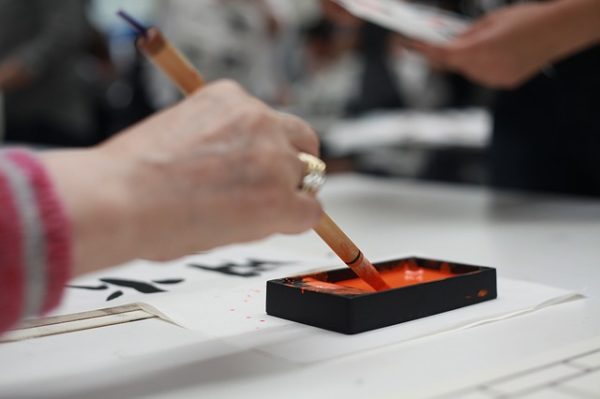
History of the Japanese Alphabet
Thanks to geography and their shared history, China and Japan were very close. So close, that Japan adopted the Chinese writing system to their own language. In China, Kanji letters were called hànzì. Since they represent particular meanings of words, adapting them seems straightforward.
But, Japanese is a lot different from Chinese. So, there had to be an adaptation of writing that reflected the pronunciation. At first, they had two pronunciations for Kanji: onyomi and kunyomi. They used onyomi to pronounce words based on the Chinese pronunciation, and kunyomi for the Japanese original words.
However, this wasn’t enough.
Japanese needed a writing system that truly represented the pronunciation of Japanese words. So, hiragana and katakana were born. Hiragana is for Japanese words, and kataka is for words of foreign origin. Often, Japanese uses hiragana to clarify the pronunciation and meaning of Kanji. This is called furigana.
You can learn more about the differences between hiragana, katana, and kanji in this in-depth comparison.
Why Are There Three Alphabets in Japanese?
For English native speakers, the concept of three separate writing systems is very foreign. But, there’s a deep and beautiful history behind the three Japanese writing systems that work together in modern Japanese.
So, once you know the history of the Japanese writing system, you may wonder, why isn’t everything written in one script? Why is it a mixture of three?
Well, it can’t be only kanji, because it doesn’t represent phonetic Japanese well. And it can’t be purely hiragana because there are no spaces to break up the words.
There have been attempts to unify the Japanese writing system into one script. But, due to the history and tradition of Japanese reading and writing, this system works. It’s unique and a lot to learn, but mastering it will definitely benefit your Japanese fluency.
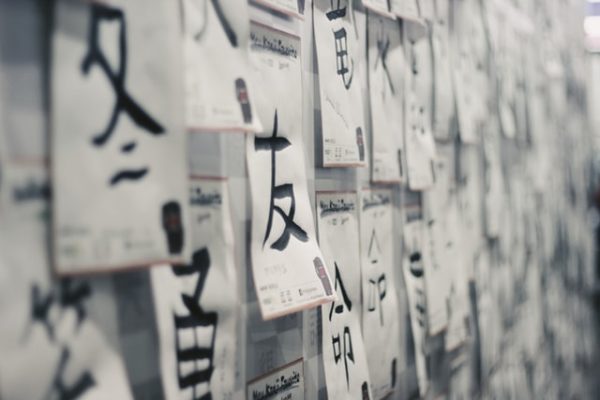
The Best Way to Learn Japanese Alphabet
There’s no denying that learning katakana, hiragana, and kanji will take time. While you may be looking for a quick and simple way to breeze through the language by doing something fun like watching anime or listening to your favorite Japanese songs, you really need to dig into studying these alphabets.
But, there are definitely some useful tricks you can use to learn the Japanese alphabet and writing system fast. These steps are the best way to learn Japanese symbols effectively.
- Break it up: learning 100 characters plus 2000 kanji symbols is a big project. Don’t try to do it all at once. Break up the load into smaller chunks. Perhaps start with hiragana or parts of hiragana. Then move on to katakana. Finally, you can learn kanji symbols slowly. Give yourself time to learn them gradually.
- Write them down: These Japanese symbols are much different from the letters you’re used to. Make sure you’re comfortable with writing them by hand. It takes a little practice, but this exercise is definitely worth it.
- Try mnemonics: mnemonics are memory aids that help you commit symbols easily. Associate Japanese symbols with their meaning. This is easier for kanji, because the symbols already kind of look like pictures of the words. 木 is tree, 火 is fire, and 口 is mouth.
- Use spaced repetition: this is the best trick to commit anything to your long term memory. The key is plenty of revision. The day after your lessons on hiragana, see how much of it you remember. Then, review the alphabet to re enforce the missing knowledge. Do that often and soon you’ll see that you can recall all hiragana characters easily.
- Sing a Japanese alphabet song: alphabet songs are extremely useful for learning a new writing system. Especially if it gets stuck in your head. Then you naturally reinforce spaced repetition. Try this alphabet song to listen to the sounds of katakana and hiragana.
Learn Common Japanese Words
So, how do you put together a Japanese word with three different writing systems? You can discover that by looking at common Japanese words. These are the ones local Japanese people use every day in their conversations. And you can find them all on OptiLingo.
OptioLingo is not just an effective language learning app. It’s a collection of the most useful Japanese vocabulary you need. These will get you to fluency much faster. Forget learning unnecessary vocabulary. Soar to Japanese success when you download OptiLingo!

